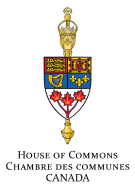PROC Committee Report
If you have any questions or comments regarding the accessibility of this publication, please contact us at accessible@parl.gc.ca.
Pursuant to its mandate under Standing Order 108(3)(a)(vi), and section 18.1 of the Canada Elections Act (CEA), the House of Commons Standing Committee on Procedure and House Affairs (the Committee) has considered the proposal of the Chief Electoral Officer of Canada (CEO) to test the inclusion of Inuit languages (i.e., Inuktitut and/or Inuinnaqtun) on regular ballots in the electoral district of Nunavut. Section 18.1 of the CEA authorizes the CEO to carry out studies on voting, including alternative voting means. With the approval from both the Committee and the Senate committee that normally considers electoral matters, the CEO may devise and test a study on voting in a general or by-election. In a letter dated 12 September 2024, the CEO asked the Committee for its approval for a pilot project to include Inuit languages on federal election ballots in the electoral district of Nunavut. The project is aligned with a recommendation of the Committee from the June 2022 report entitled Inclusion of Indigenous Languages on Federal Election Ballots. On 26 September 2024, the CEO and Karine Morin, Senior Director, Integrity, Regulatory Policy and Parliamentary Affairs, Elections Canada, appeared before the Committee to provide information on the pilot project and respond to questions from committee members. Based on the evidence and materials submitted to it, the Committee is satisfied that the proposal of the CEO is worth pursuing. The Committee is of the opinion that this proposal may allow a greater number of electors in Nunavut to exercise their constitutional right to vote, while offering sufficient guarantees to preserve the integrity of the vote. Therefore, the Committee recommends that the CEO be authorized to proceed with the pilot project that would implement temporary variations to the CEA for the duration of the project in the electoral district of Nunavut. The temporary variations to the CEA include:
Beyond its recommendation that the CEO be authorized to test the inclusion of Inuit languages on regular ballots in the electoral district of Nunavut, the Committee also wishes to call the CEO’s attention to Recommendation 3 from its Twelfth Report entitled, The Inclusion of Indigenous Languages on Federal Election Ballots: A Step towards Reconciliation. That recommendation reads: That Elections Canada print and post facsimiles of the official ballot in Indigenous languages to serve as a guide for electors at the polling station and/or voting booth, where appropriate, as determined by the Indigenous communities advisory group. The Committee is of the view that the CEO may wish to consider implementing Recommendation 3 as part of its planned pilot project or during a comparable future pilot project. |
| A copy of the relevant Minutes of Proceedings (Meetings Nos. 124, 128 and 129) is tabled. |
